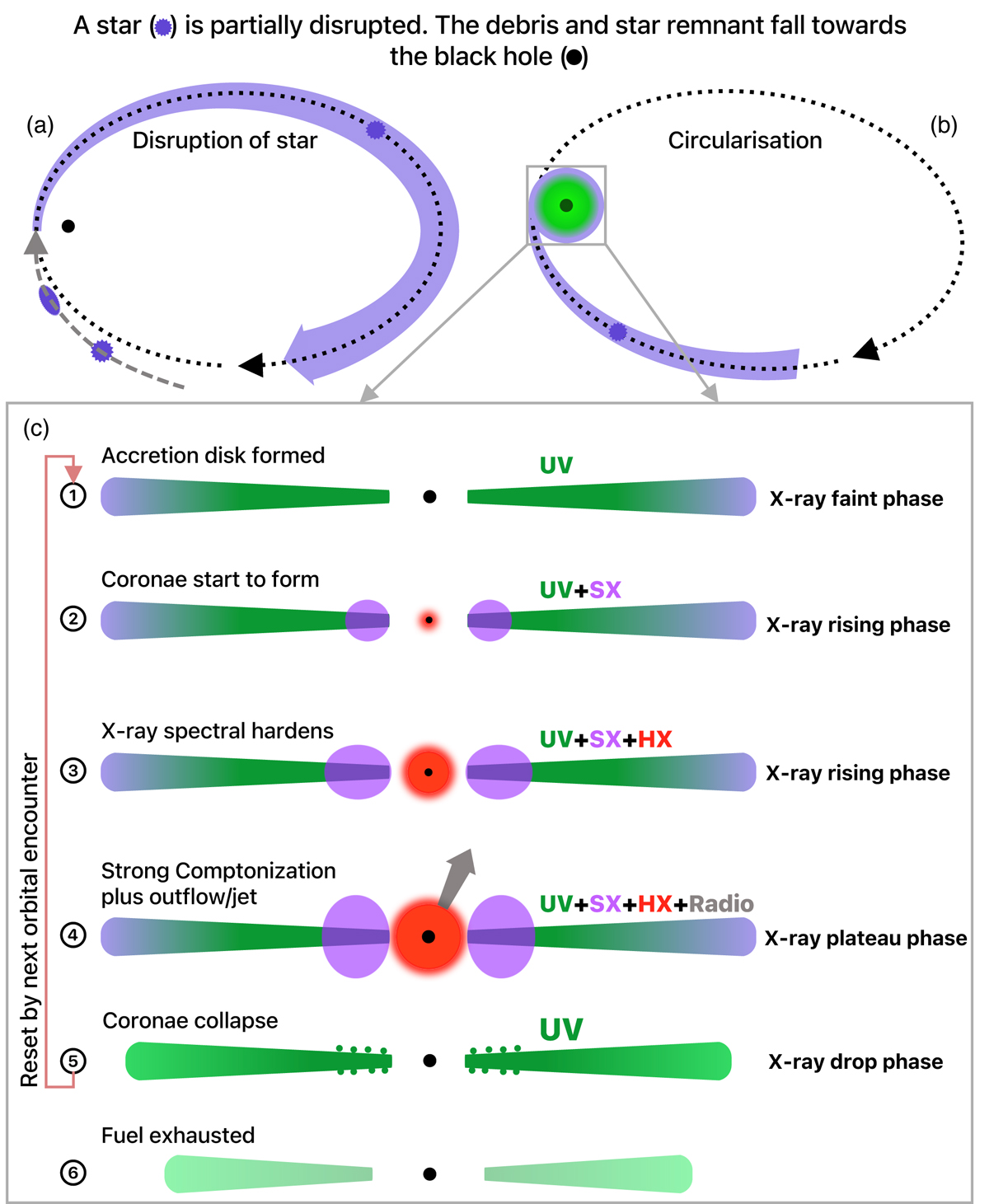Fig. 11.

Download original image
Partially disrupted star upon pericentre passage around a BH (panel a). The initial orbit of the star is represented with a dashed grey curve. The dotted black curve represents the orbit of the stellar debris and remnant (panel a and b). The stellar debris is rapidly circularised, and an accretion disk is formed (panel b). The freed gas (blue) is accreted onto the BH, with the accretion process proceeding in phases &#Xtextcircled;1–&#Xtextcircled;6 (panel c), with a sequential build-up &#Xtextcircled;1–&#Xtextcircled;4 of an accretion disk (UV, green colour), warm (soft X-rays, purple) and hot corona (hard X-rays, red), as well as an outflow or jet (radio, grey). When the gas reservoir depletes, the corona collapses for unknown reasons (&#Xtextcircled;5, no X-ray emission), and the accretion of the remaining accretion disk gas is even more rapid, leading to enhanced UV emission. Finally, as the fuel is completely exhausted (6), the UV emission drops as well. However, the subsequent pericentre passage resets the cycle.
Current usage metrics show cumulative count of Article Views (full-text article views including HTML views, PDF and ePub downloads, according to the available data) and Abstracts Views on Vision4Press platform.
Data correspond to usage on the plateform after 2015. The current usage metrics is available 48-96 hours after online publication and is updated daily on week days.
Initial download of the metrics may take a while.


